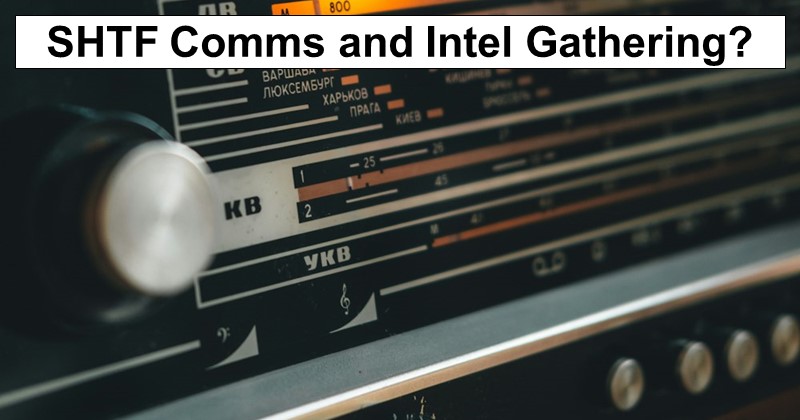I’m not much into communication (just ask my wife), so it’s something that I’ve neglected to a large extent in my preps. That doesn’t mean I don’t have options. For instance, I do have the cheapo FRS radios for camping; I’ve got GMRS (and plan to buy more); And, of course, I have the ubiquitous prepper radio–the Baofeng UV-5R as a “just in case I ever needed it” option.
And yes, I’m fully aware that there are far better options than the Baofeng, and I know it needs programmed using CHIRP, and that you should upgrade the antenna, and I know you need a license and training and all that stuff. At some point, however, it’s feeling like a lot of work for something that I’m still having a hard time believing that I’ll truly need post-SHTF.
Which is why I got to wondering if HAM isn’t actually the best way to go, even as a prepper. I’m thinking GMRS is the better option for nearby communications with family and neighbors…you know, the people you actually need to communicate with about 99% of the time. This isn’t to say there aren’t uses for amateur radio, but I’m reconsidering my post-disaster comms plan, regardless.
As you might suspect, I’ve been watching quite a few YouTube videos to get an idea of what I (and you) can do. I’ll include six videos below that I found useful, so buckle up because today is going to be a lengthy one.
Let’s start with the basics: What’s the differences between HAM, GMRS, CB, MURS, and FRS? This video answers that question:
I hope the video above clarifies the differences. Clearly, this guy has his preference for amateur radio, which is fine, but let’s find out if HAM or GMRS is the better choice for emergencies:
I think the guy in the video above could’ve got to the point a bit quicker, but I’d say he makes it clear that, for most purposes, GMRS is just easier straight out of the box. Plus, you can get one GMRS license that lasts 10 years and covers your entire immediate family for $35; HAM is much more involved and only covers one person. That alone makes GMRS a more attractive option for most of us.
You might be thinking, “Okay. No problem. I can buy an amateur radio, like the Baofeng UV-5R or something much better, get a GMRS license, and be good to go as a ‘just in case I need it’ option.” This is what I’d assumed about a decade ago. Sadly, that’s not the case…
As it turns out, our government likes to make things difficult on us at times. Who would’ve guessed?
Now that I have you convinced that GMRS is (probably) the way to go, what to buy? There are many options online, including on Amazon, but maybe there are better options out there:
The guy in the video above seems to like BuyTwoWayRadios.com. I don’t have any experience with them or the radios he recommends, so we’ll just have to take his word for it. For what it’s worth, I searched for those radios (Wouxun KG-935G Plus, Wouxun KG-Q10G) on Amazon and couldn’t find them, so they must be good. 🙂
Finally, what about intel gathering and communications for times when a disaster strikes, but it’s not necessarily the end of the world? Watch this…
The video above not only discusses portable/handheld options, but a mobile (in your vehicle) option, as well as a permanent (in the house) option. Surely, this adds additional cost to your comms plan, but not by a terrible amount if you plan things out.
All that’s nice to know and to have, but what if we want more security in our comms, especially during a SHTF scenario? Consider this…
Truth be told, the information in the video above is beyond what little knowledge I have of this topic, but it was interesting to watch. That said, I’d say the main takeaways include: switch to digital radios, consider some sort of encryption, employ directional antennas or terrain masking, and choose data bursts instead of talking. There’s more to it than that and no “best” solution no matter what you choose, but my hope is that this overview will get you to thinking about what your post-disaster communications plan is for your family before it’s needed.

Leave a Reply